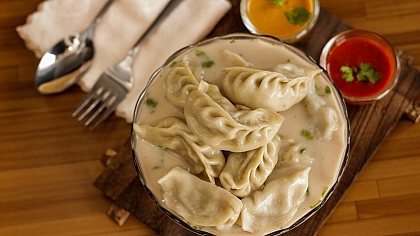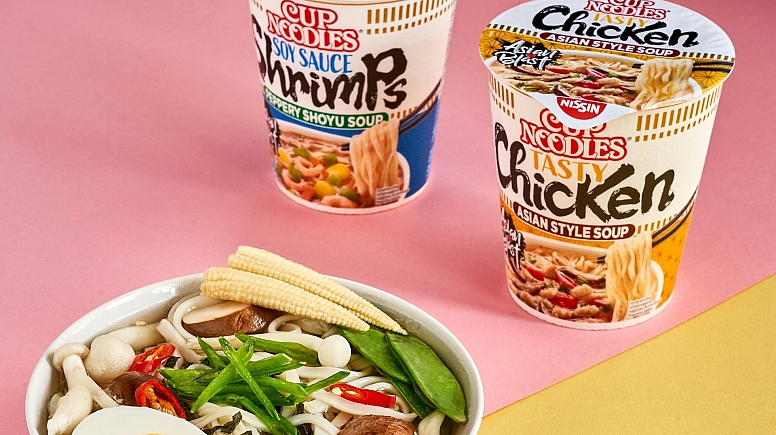
How Korean Instant Noodles and Japanese Ramen Took the World by Storm
Instant noodles have become a global culinary phenomenon, captivating taste buds across continents with their convenience, flavour diversity, and cultural significance. Originating in East Asia, these quick and easy meals have transformed from humble beginnings into a multibillion-dollar industry that continues to evolve and adapt to changing consumer preferences.
Among the most influential players in this arena are Korean instant noodles and Japanese ramen, both of which have achieved international acclaim and a dedicated fanbase.
The History and Global Impact of Instant Noodles
The story of instant noodles began in Japan in 1958, when Momofuku Ando, the founder of Nissin Foods, invented the world's first instant noodle product, Chikin Ramen. This groundbreaking innovation was born out of Ando's desire to create an affordable, nutritious, and easy-to-prepare meal that could address post-war food shortages in Japan. Little did he know that his creation would lay the foundation for a global culinary revolution.
The success of Chikin Ramen spurred the development of various instant noodle products. In 1971, Nissin introduced Cup Noodles, an even more convenient version where the noodles and flavouring were packaged in a disposable, heat-resistant container. This innovation not only enhanced convenience but also set the stage for the global expansion of instant noodles.
Over the decades, instant noodles have transcended cultural and geographic boundaries, becoming a staple in pantries worldwide. Their popularity can be attributed to several factors: affordability, convenience, and an ever-expanding array of flavours and varieties that cater to diverse tastes. From college students seeking a quick meal to busy professionals in need of a convenient lunch option, instant noodles have become a go-to choice for many.
The Rise in Popularity of Korean and Japanese Instant Noodles
While instant noodles have always enjoyed a strong following, the past two decades have seen a particularly notable rise in the popularity of Korean and Japanese instant noodle varieties. This surge can be linked to the global spread of East Asian pop culture, including the massive influence of K-pop, Korean dramas (K-dramas), and Japanese anime. These cultural exports have not only introduced international audiences to new forms of entertainment but also to the culinary delights featured within them.

Korean instant noodles, or "ramyeon," have captured the hearts of many with their bold flavours and distinctive spiciness. Brands like Shin Ramyun and Samyang's Buldak Bokkeummyun have become household names, thanks to their robust marketing efforts and viral social media presence. The infamous "fire noodle challenge," which showcases individuals attempting to eat extremely spicy noodles, has further cemented the popularity of Korean instant noodles in global consciousness.
On the other hand, Japanese ramen has gained international acclaim for its depth of flavour and diverse regional varieties. From the creamy richness of Tonkotsu ramen to the savoury complexity of Shoyu and Miso ramen, Japanese instant noodles offer a gourmet experience in a convenient package. Pioneers like Nissin and Maruchan have led the charge, while premium brands like Ichiran have elevated instant ramen to new heights, offering restaurant-quality flavours that can be enjoyed at home.
The convergence of cultural influence, strategic marketing, and the inherent appeal of these noodle dishes have propelled Korean and Japanese instant noodles to the forefront of the global instant noodle market. Their journey from local favourites to international sensations underscores the universal love for flavourful, convenient, and satisfying meals.
Origins and Evolution
The journey of instant noodles from a revolutionary invention in Japan to a worldwide culinary staple is a fascinating tale of innovation, adaptation, and cultural exchange. Understanding the origins and evolution of instant noodles provides insight into how Korean and Japanese varieties have come to dominate the global market.
Key Figures and Companies in the Development of Instant Noodles
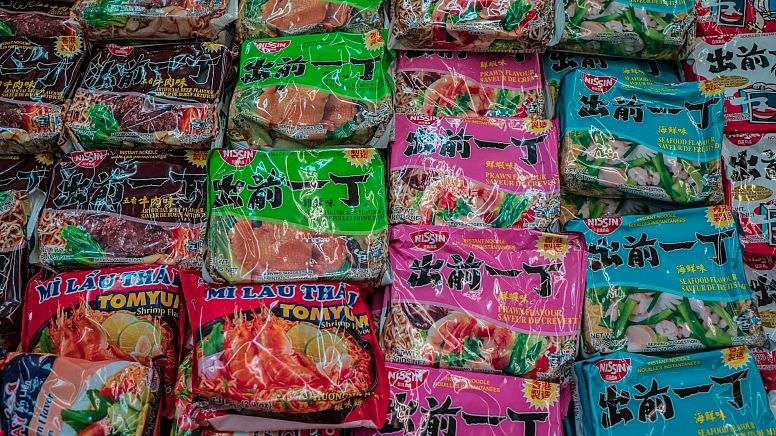
-
Momofuku Ando and Nissin Foods: Often hailed as the "father of instant noodles," Momofuku Ando's contributions cannot be overstated. His relentless pursuit of innovation led to the creation of both the original instant noodles and Cup Noodles, revolutionizing how the world consumes quick meals. Nissin Foods, under his leadership, became a pioneering force, constantly pushing the boundaries of flavour and convenience.
-
Toyo Suisan (Maruchan): Another key player in the instant noodle industry, Toyo Suisan, known for its Maruchan brand, made significant strides in expanding the market. Maruchan Ramen, with its wide variety of flavours and affordable pricing, became a staple in many households across the globe.
-
Samyang Foods: In Korea, Samyang Foods made history by introducing the first Korean instant noodles in 1963. Their product, Samyang Ramyeon, was inspired by Japanese instant noodles but tailored to suit Korean palates with spicier and more robust flavours. Over time, Samyang became a major player in the instant noodle market, known especially for its extremely spicy Buldak Bokkeummyun, which gained worldwide fame through viral challenges.
-
Nongshim: Established in 1965, Nongshim is another major Korean instant noodle manufacturer. Their flagship product, Shin Ramyun, introduced in 1986, has become synonymous with Korean instant noodles. Known for its rich, spicy broth and chewy noodles, Shin Ramyun has captivated consumers both in Korea and internationally.
The Spread of Instant Noodles Beyond East Asia
The initial success of instant noodles in Japan and Korea set the stage for their spread across Asia and eventually the world. As Japanese and Korean pop culture gained international traction, so did their culinary counterparts. Export strategies, tailored marketing, and the universal appeal of convenience foods facilitated the global expansion of instant noodles.
By the late 20th century, instant noodles had become a global phenomenon. Each country adapted these noodles to suit local tastes, leading to a diverse array of flavours and styles. In China, they became a vital part of the diet, with regional brands offering unique takes on traditional flavours. In Southeast Asia, countries like Thailand, Indonesia, and Malaysia embraced instant noodles with spicy and aromatic variations that reflected their rich culinary traditions.
Technological Innovations and Market Adaptations
The evolution of instant noodles has been marked by continuous innovation. Advances in technology have improved the quality and variety of instant noodles, making them more palatable and nutritious. Freeze-drying techniques, for example, have enhanced the texture and flavour of noodles, bringing them closer to freshly made versions.
Moreover, companies have adapted their products to cater to changing consumer preferences. Health-conscious consumers, for instance, have driven the development of lower-sodium options, whole-grain noodles, and products free from artificial additives. The rise of vegetarian and vegan diets has also led to the introduction of plant-based instant noodles, broadening their appeal.
Cultural Exchange and Culinary Fusion
The global spread of instant noodles has facilitated a fascinating exchange of culinary traditions. As they travelled across borders, instant noodles have been influenced by local flavours and cooking styles, resulting in unique fusion dishes. In the United States, for example, instant ramen has been adapted into various creative dishes, from ramen burgers to noodle salads.
In turn, instant noodles have introduced international audiences to East Asian flavours and ingredients, fostering a greater appreciation for the region’s culinary heritage. This cultural exchange has enriched the global food landscape, demonstrating the power of food to connect people across cultures.
The origins and evolution of instant noodles underscore their status as a versatile and beloved global food. From their inception in Japan to their widespread popularity, the story of instant noodles is one of continuous innovation, cultural exchange, and enduring appeal.
Types of Korean Instant Noodles
Korean instant noodles, or "ramyeon," are renowned for their bold and diverse flavours, often characterized by their spiciness and rich broths. Over the years, Korean manufacturers have developed a wide variety of instant noodle types to cater to different tastes and preferences. Here are some of the most popular types:
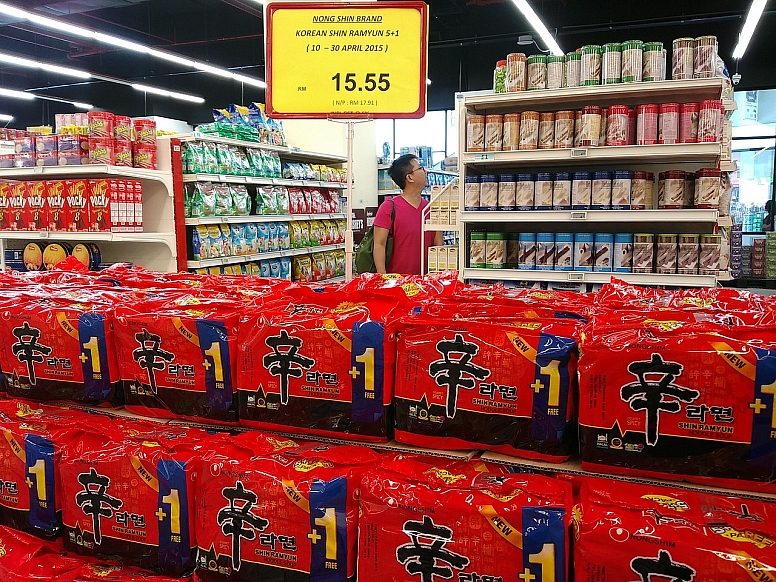
Ramyeon (라면)
Ramyeon is the general term for Korean instant noodles, and it encompasses a wide range of flavours and styles. Typically, ramyeon noodles are thicker and chewier compared to their Japanese counterparts, and they are often paired with spicy broths. Common ingredients in ramyeon include dried vegetables, beef or chicken stock, and various spices.
-
Shin Ramyun (신라면): Arguably the most iconic Korean instant noodle brand worldwide, Shin Ramyun, introduced by Nongshim in 1986, is renowned for its spicy, robust broth and thick, chewy noodles. The broth is rich in beef flavour and generously seasoned with red pepper, garlic, and various spices. It often includes dried vegetables such as mushrooms, carrots, and green onions, enhancing its hearty composition.
Widely praised for its bold taste, Shin Ramyun provides a satisfying noodle texture that holds up well in the flavourful broth.
-
Nongshim Chapagetti (농심 짜파게티): Chapagetti offers a unique take on instant noodles, inspired by the Korean-Chinese dish Jjajangmyeon (black bean noodles). It features a savoury black bean sauce that coats the noodles, delivering a distinct, slightly sweet, and umami flavour.
Providing a convenient instant version of the traditional Jjajangmyeon, Chapagetti includes thick, chewy noodles akin to the fresh dish. The noodles come with a packet of rich black bean sauce made from black bean paste, caramelized onions, and other seasonings, creating a savoury and slightly sweet taste. Chapagetti is often enjoyed as a quick, comforting meal, bringing the deep, umami-rich flavour of traditional Jjajangmyeon in an easy-to-prepare format.
-
Samyang Buldak Bokkeummyun (삼양 불닭볶음면): Famously known as "fire noodles," this variety is renowned for its intense spiciness and has become a viral sensation through various online challenges. The noodles are stir-fried with a sauce made from gochugaru (Korean red chilli pepper flakes), soy sauce, and sugar, creating a dish that is both fiery and flavourful.
Buldak Bokkeummyun has gained international fame and comes in several variations, such as cheese, carbonara, and curry, each offering a unique twist on the original spicy profile.
-
Ottogi Jin Ramen (오뚜기 진라면): Jin Ramen presents a milder alternative to Shin Ramyun, featuring a more balanced flavour profile. Available in two main varieties—mild and spicy—it caters to different heat preferences. The broth is savoury with a subtle spiciness, and the noodles are soft and satisfying.
As a versatile instant noodle choice, Jin Ramen's broth is rich and flavourful, combining beef and vegetable notes. The noodles are soft yet firm, offering a pleasant texture. The spicy version provides a moderate heat level, making it ideal for those who enjoy some spice without it being too intense. This brand is appreciated for its well-rounded flavour and comforting qualities.
-
Paldo Bibim Men (팔도 비빔면): Bibim Men is a well-loved summer dish, served cold and combined with a sweet and spicy sauce. Unlike standard ramyeon, it lacks a soup base. Instead, the noodles are coated in a thick sauce made from gochujang (Korean red chilli paste), vinegar, and sugar, offering a refreshing and tangy taste.
Paldo Bibim Men is a favoured option for those desiring a spicy and cooling noodle dish. The sauce delivers a vibrant mix of sweetness, spiciness, and tanginess, making it perfect for hot summer days. The noodles are thin and chewy, effectively absorbing the sauce and creating a harmonious flavour blend. Bibim Men is cherished for its distinct taste and invigorating nature.
Jjajangmyeon (짜장면)
Jjajangmyeon is a Korean-Chinese fusion dish featuring thick noodles covered in a savoury black bean sauce. While traditionally a fresh noodle dish, instant jjajangmyeon has become immensely popular for its convenience and rich flavour.
-
Nongshim Chapagetti (농심 짜파게티): As mentioned earlier, Chapagetti is the instant noodle version of jjajangmyeon. It combines chewy noodles with a rich, savoury black bean sauce that includes bits of dried meat and vegetables. The result is a comforting, umami-rich meal that has found a special place in the hearts of many.
-
Ottogi Jjajang Noodles (오뚜기 짜장면): Another popular brand offering instant jjajangmyeon, Ottogi’s version is known for its thick, smooth black bean sauce and chewy noodles. The sauce includes dehydrated potatoes, onions, and bits of meat, providing a hearty and satisfying experience.
Jjampong (짬뽕)
Jjampong is a Korean-Chinese spicy seafood noodle soup, characterized by its fiery red broth and abundant seafood ingredients. The instant version of jjampong aims to replicate this complex, flavourful dish in a more convenient format.
-
Nongshim Neoguri (농심 너구리): Neoguri is a beloved instant jjampong variant known for its thick, udon-like noodles and spicy seafood-flavoured broth. The soup base combines various seafood flavours, and the package often includes dried seaweed and vegetable pieces. It is particularly cherished for its rich, deep flavour and the satisfying chewiness of the noodles.
Neoguri stands out with its thick udon-like noodles and spicy seafood-flavoured broth. The broth is rich and deep, featuring a blend of seafood flavours, including kelp and anchovy, and a fiery kick from red pepper powder. Dried seaweed and vegetable pieces add texture and complexity to the soup. Neoguri is well-loved for its robust taste and hearty composition.
-
Paldo Jjampong Noodles (팔도 짬뽕면): Paldo’s jjampong offers a spicy, seafood-rich broth with a complex flavour profile. The noodles are thick and chewy, absorbing the broth well. The seasoning packet typically includes dried seafood, vegetables, and spices, creating a robust and aromatic soup.
Bibim Guksu (비빔국수)
Bibim Guksu is a cold noodle dish traditionally enjoyed during the hot summer months in Korea. It features thin, chewy noodles mixed with a spicy and tangy sauce.
-
Paldo Bibim Men (팔도 비빔면): As the instant version of bibim guksu, Bibim Men is a beloved choice for those seeking a refreshing and spicy meal. The noodles are served cold, mixed with a vibrant sauce made from gochujang, vinegar, and sugar. This dish offers a perfect balance of heat, sweetness, and tanginess, making it a popular choice for summer dining.
-
Ottogi Bibim Myun (오뚜기 비빔면): Another popular brand, Ottogi’s Bibim Myun, provides a similar experience with its spicy and slightly sweet sauce. The noodles are thin and chewy, and the sauce includes a mix of gochujang, vinegar, and sesame oil, creating a delightful and refreshing meal.
Korean instant noodles have captivated global audiences with their bold flavours and diverse options. Whether you prefer the fiery heat of Buldak Bokkeummyun or the refreshing tang of Bibim Men, there is a Korean instant noodle variety to suit every palate.
Popular Korean Instant Noodle Brands and Flavours
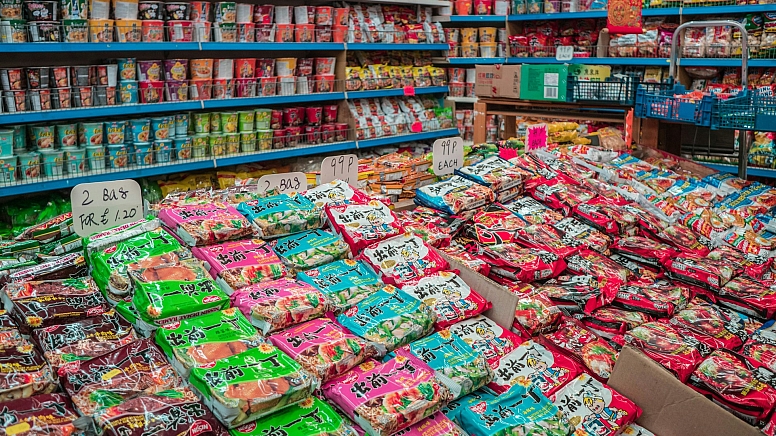
Korean instant noodles have become a culinary sensation, known for their diverse and robust flavours. Here, we'll explore some of the most popular brands and their standout products that have gained international acclaim.
Additional Notable Korean Instant Noodle Brands and Flavours
Ottogi Yeul Ramen (오뚜기 열라면)
Brand: Ottogi
Flavour Profile: Extra spicy with a clear, savoury broth.
Description: Yeul Ramen is Ottogi’s offering for spice enthusiasts. The broth is clear yet intensely spicy, with a savoury base that highlights the heat without overwhelming other flavours. The noodles are firm and chewy, complementing the broth well. This ramen is particularly popular among those who seek a straightforward, spicy noodle soup.
Samyang Cheese Buldak Bokkeummyun (삼양 치즈 불닭볶음면)
Brand: Samyang Foods
Flavour Profile: Spicy with a creamy cheese finish.
Description: A variation of the original Buldak Bokkeummyun, the Cheese version adds a packet of powdered cheese to the mix. This addition creates a creamy, slightly tangy contrast to the intense spiciness of the noodles, resulting in a unique and indulgent flavour profile. The combination of heat and creaminess makes this version a favourite for those looking for a twist on the classic fire noodles.
Korean instant noodles have captivated a global audience with their bold and diverse flavours. From the iconic Shin Ramyun to the fiery Buldak Bokkeummyun, these noodles offer a taste experience that ranges from comforting and savoury to daringly spicy. Each brand and flavour brings something unique to the table, reflecting the rich culinary heritage and innovative spirit of Korea.
Types of Japanese Instant Noodles
Japanese instant noodles, particularly ramen, have achieved global popularity for their rich flavours, diverse varieties, and cultural significance. While ramen is the most well-known type of Japanese instant noodle, several other varieties showcase the versatility and culinary tradition of Japan. Here, we explore the different types of Japanese instant noodles and what makes each unique.

Ramen (ラーメン)
Ramen is perhaps the most iconic of all Japanese noodles, with a wide range of regional variations and flavour profiles. Instant ramen has successfully captured the essence of these traditional bowls in a convenient format. Here are some of the main types of ramen found in instant noodle form:
-
Shoyu Ramen (醤油ラーメン):
- Flavour Profile: Clear, soy sauce-based broth.
- Description: Shoyu ramen features a clear, brown broth seasoned with soy sauce, giving it a salty and savoury flavour. This Tokyo-style ramen often includes curly noodles, and the broth is typically lighter than Tonkotsu Ramen (豚骨ラーメン) but equally flavourful.
-
Miso Ramen (味噌ラーメン):
- Flavour Profile: Savory, miso-based broth with a hint of sweetness.
- Description: Hailing from Hokkaido, Miso ramen incorporates fermented soybean paste into the broth, resulting in a hearty and slightly sweet flavour. The noodles are usually thick and wavy, designed to hold up against the robust miso soup.
-
Shio Ramen (塩ラーメン):
- Flavour Profile: Light, salt-based broth.
- Description: Shio ramen is characterized by its clear, salty broth that is often more delicate and lighter than other types. Originating from the Chubu region, it often includes seafood or chicken-based broths, with straight or slightly wavy noodles.
Udon (うどん)
Udon noodles are thick, chewy wheat noodles that can be enjoyed in both hot and cold dishes. Instant udon noodles offer a convenient way to enjoy this traditional Japanese staple.
-
Kitsune Udon (きつねうどん):
- Flavour Profile: Light dashi broth with sweet fried tofu.
- Description: Kitsune Udon features a clear, flavourful dashi broth made from kelp and bonito flakes, topped with aburaage (sweet fried tofu). The thick, chewy noodles absorb the broth well, creating a comforting and hearty dish.
-
Tempura Udon (天ぷらうどん):
- Flavour Profile: Light dashi broth with tempura pieces.
- Description: Tempura Udon includes a light, savoury broth paired with udon noodles and pieces of tempura (often shrimp or vegetables). The tempura adds a crunchy texture and additional flavour to the dish, making it a popular choice for udon lovers.
Soba (そば)
Soba noodles, made from buckwheat flour, are thin and have a slightly nutty flavour. They can be enjoyed hot or cold and are a common ingredient in Japanese cuisine.
-
Kake Soba (かけそば):
- Flavour Profile: Light, dashi-based broth.
- Description: Kake Soba features soba noodles in a simple dashi broth, often garnished with green onions and a slice of kamaboko (fish cake). The broth is light yet flavourful, allowing the nutty taste of the soba noodles to shine.
-
Tempura Soba (天ぷらそば):
- Flavour Profile: Light dashi broth with tempura pieces.
- Description: Similar to Tempura Udon, Tempura Soba includes a light dashi broth and buckwheat soba noodles, topped with tempura pieces. The combination of the nutty noodles and crispy tempura creates a delightful texture and flavour contrast.
Somen (そうめん)
Somen noodles are very thin wheat noodles, typically enjoyed cold with a dipping sauce during the summer months. Instant somen noodles provide a quick and easy way to enjoy this refreshing dish.
-
Hiyashi Somen (冷やしそうめん):
- Flavour Profile: Light and refreshing with a dipping sauce.
- Description: Hiyashi Somen is served cold with a tsuyu dipping sauce made from soy sauce, mirin, and dashi. The thin noodles are chilled and often garnished with green onions, ginger, and sesame seeds. This dish is particularly popular during the hot summer months for its cooling effect.
-
Nyumen (にゅうめん):
- Flavour Profile: Light, hot broth.
- Description: Nyumen is a variation of somen noodles served in a hot, clear broth. The light broth is usually made from dashi and seasoned with soy sauce, creating a simple yet comforting noodle soup.
Japanese instant noodles offer a diverse array of flavours and textures, each reflecting the rich culinary heritage of Japan. From the hearty richness of Tonkotsu ramen to the light and refreshing Hiyashi Somen, these noodles cater to a wide range of tastes and preferences, making them a beloved choice for noodle enthusiasts around the world.
The Global Impact of Korean and Japanese Instant Noodles

The phenomenon of instant noodles has transcended cultural boundaries, becoming a global culinary staple. Both Korean and Japanese instant noodles have played a significant role in this global spread, each bringing unique flavours and cultural influences that have captivated the palates of people worldwide. Here, we explore the factors that have contributed to the global impact of these instant noodles and their influence on international food culture.
The Rise of Instant Noodles
Instant noodles were first introduced to the world by Japanese entrepreneur Momofuku Ando in 1958 with the creation of Chicken Ramen. This innovation offered a quick, affordable, and tasty meal option, sparking a culinary revolution. The success of instant noodles in Japan laid the foundation for their global expansion, leading to the development of numerous varieties and flavours tailored to different regional tastes.
-
Convenience and Affordability: One of the primary reasons for the global success of instant noodles is their convenience and affordability. Instant noodles are easy to prepare, requiring only hot water, and are relatively inexpensive, making them accessible to people from all walks of life. This convenience has made them a go-to option for students, busy professionals, and anyone looking for a quick meal.
-
Shelf Stability: The long shelf life of instant noodles has also contributed to their popularity. They can be stored for extended periods without spoiling, making them an ideal pantry staple. This shelf stability has made instant noodles particularly valuable in regions where fresh food may be less accessible or more expensive.
-
Versatility and Customization: Instant noodles are incredibly versatile and can be customized with a variety of ingredients to suit individual preferences. People often add vegetables, meat, eggs, and other toppings to enhance the flavour and nutritional value of their noodles. This adaptability has made instant noodles a favourite in diverse culinary traditions around the world.
Cultural Influence and Global Popularity
The unique flavours and cultural heritage of Korean and Japanese instant noodles have contributed significantly to their global popularity. Each country’s distinct culinary traditions have been effectively encapsulated in their instant noodle offerings, making them appealing to a wide audience.
-
Korean Instant Noodles: The bold and spicy flavours of Korean instant noodles have garnered a massive following. Products like Shin Ramyun and Buldak Bokkeummyun have introduced international consumers to the heat and depth of Korean cuisine. The viral "fire noodle challenge," where people attempt to eat the extremely spicy Buldak Bokkeummyun, has further popularized Korean noodles and made them a cultural phenomenon.
-
Japanese Instant Noodles: Japanese instant noodles, particularly ramen, have been celebrated for their rich, umami-packed broths and high-quality noodles. Brands like Nissin and Sapporo Ichiban have made classic Japanese flavours like Tonkotsu, Shoyu, and Miso accessible to a global audience. The cultural significance of ramen in Japan, combined with the country’s reputation for culinary excellence, has made Japanese instant noodles highly sought after.
-
Fusion and Innovation: The global impact of Korean and Japanese instant noodles is also evident in the fusion and innovation they inspire. Instant noodle dishes have been adapted and reinvented in various countries, incorporating local ingredients and flavours. This cross-cultural exchange has resulted in unique culinary creations that blend the essence of Korean and Japanese noodles with regional tastes.
Market Expansion and International Brands
The expansion of Korean and Japanese instant noodle brands into international markets has played a crucial role in their global impact. These brands have strategically marketed their products to appeal to diverse consumer bases, resulting in widespread availability and recognition.
-
Export Strategies: Both Korean and Japanese instant noodle manufacturers have focused on exporting their products to various regions, including North America, Europe, and Southeast Asia. This has been achieved through strategic partnerships with local distributors and retailers, as well as the establishment of production facilities abroad.
-
Brand Recognition: The success of Korean and Japanese instant noodles can be attributed to the strong brand recognition of key players like Nissin, Nongshim, and Samyang Foods. These brands have invested in marketing campaigns that highlight the unique qualities of their products, such as the spiciness of Korean noodles or the rich broths of Japanese ramen.
-
Adaptation to Local Tastes: To cater to international markets, many Korean and Japanese instant noodle brands have developed flavours and products tailored to local tastes. For example, Nissin offers unique flavours in different regions, such as curry-flavoured noodles in India and tom yum-flavoured noodles in Thailand. This adaptability has helped these brands resonate with consumers worldwide.
The Influence on Culinary Trends and Culture
The popularity of Korean and Japanese instant noodles has influenced culinary trends and food culture globally. Their impact can be seen in various aspects of modern dining and food consumption.

-
Ramen Shops and Korean BBQ: The global fascination with Japanese ramen and Korean BBQ has led to the proliferation of ramen shops and Korean BBQ restaurants around the world. These establishments often draw inspiration from instant noodle flavours and styles, creating dishes that reflect the essence of traditional Japanese and Korean cuisine.
-
Fusion Cuisine: The fusion of Korean and Japanese flavours with other culinary traditions has given rise to innovative dishes. For example, ramen burgers, where ramen noodles replace the traditional burger bun, and kimchi-flavoured instant noodles are popular examples of how these instant noodles have inspired new culinary creations.
-
Pop Culture and Media: The influence of Korean and Japanese instant noodles extends into pop culture and media. Instant noodles are frequently featured in movies, TV shows, and social media content, further cementing their place in popular culture. The viral nature of food challenges and mukbang (eating shows) has also contributed to the global visibility of these noodles.
The global impact of Korean and Japanese instant noodles is a testament to their versatility, cultural significance, and ability to adapt to diverse tastes and preferences. From the humble beginnings of instant ramen in Japan to the fiery sensation of Korean Buldak Bokkeummyun, these noodles have become a beloved and influential part of the global culinary landscape.
Health and Nutrition: The Evolution of Instant Noodles
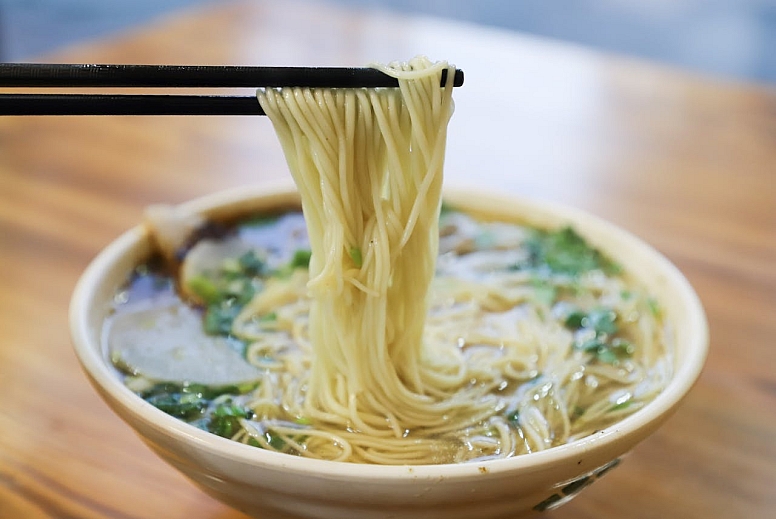
While instant noodles are often celebrated for their convenience and flavour, there has been growing concern about their nutritional content and health implications. Over the years, manufacturers have responded to these concerns by developing healthier options and improving the nutritional profile of their products. This section explores the health aspects of instant noodles and the steps taken to make them a more nutritious choice.
Nutritional Content of Instant Noodles
Traditional instant noodles are typically high in calories, sodium, and saturated fats due to the frying process used to dry the noodles and the seasoning packets that accompany them. Here’s a breakdown of the typical nutritional content:
-
Calories: Instant noodles generally provide around 200 to 400 calories per serving, depending on the brand and flavour. This can increase significantly when additional toppings or ingredients are added.
-
Sodium: One of the major health concerns with instant noodles is their high sodium content. A single serving can contain up to 1,500 mg of sodium, which is about two-thirds of the recommended daily intake for an adult.
-
Fats: Traditional instant noodles often contain high levels of saturated fats due to the frying process. However, this can vary widely among different products.
-
Carbohydrates: Instant noodles are a significant source of carbohydrates, providing energy but also contributing to a high glycemic index, which can affect blood sugar levels.
-
Proteins and Vitamins: Instant noodles are typically low in protein, fibre, and essential vitamins and minerals. Some brands may fortify their products with vitamins and minerals to address these deficiencies.
Health Concerns and Criticisms
The high sodium and fat content, along with the low nutritional value, have led to several health concerns associated with regular consumption of instant noodles:
-
Hypertension: The high sodium content in instant noodles can contribute to hypertension (high blood pressure), increasing the risk of heart disease and stroke.
-
Obesity and Metabolic Syndrome: Frequent consumption of instant noodles, especially in combination with other high-calorie, low-nutrient foods, can contribute to obesity and metabolic syndrome.
-
Nutrient Deficiency: Relying heavily on instant noodles can lead to nutrient deficiencies, as they lack essential nutrients such as fibre, protein, vitamins, and minerals.
-
Food Additives: Instant noodles often contain food additives and preservatives, which can be a concern for consumers. Monosodium glutamate (MSG), commonly used to enhance flavour, has been a particular focus.
Healthier Instant Noodle Options

In response to these concerns, many manufacturers have introduced healthier alternatives that aim to provide the convenience and taste of instant noodles without negative health impacts.
-
Air-Dried Noodles: Some brands have switched from frying to air-drying their noodles, significantly reducing the fat content. This method also helps retain more of the noodles’ natural nutrients.
-
Whole Grain and Fibre-Enriched Noodles: To increase the nutritional value, some products now use whole grain flour or add fibre to the noodles. These options provide a lower glycemic index and more sustained energy release.
-
Low-Sodium Varieties: Several brands offer low-sodium versions of their products. These noodles have reduced sodium in the seasoning packets, and some use natural flavour enhancers like herbs and spices to maintain taste.
-
Fortified Noodles: To address nutrient deficiencies, some instant noodles are fortified with vitamins and minerals. This can include added iron, calcium, and B vitamins, making them a more balanced meal option.
-
Vegetable-Based Noodles: Innovations include noodles made from vegetables such as spinach, carrot, and sweet potato. These options not only provide additional nutrients but also cater to gluten-free and low-carb diets.
Brands Leading the Way in Healthier Instant Noodles
Several brands have been at the forefront of developing healthier instant noodle options:
-
Nissin’s Cup Noodles Very Veggie: Nissin has introduced a line of Cup Noodles with a full serving of vegetables in each cup. These noodles provide added fibre and nutrients from the included vegetables.
-
Nongshim’s Shin Ramyun Veggie: This product offers a vegetarian version of the popular Shin Ramyun, focusing on plant-based ingredients and lower sodium content while maintaining the iconic spicy flavour.
-
Lotus Foods Rice Ramen: Made from organic brown rice, millet, and other grains, Lotus Foods’ Rice Ramen provides a gluten-free alternative with higher fibre and protein content.
-
Dr. McDougall’s Right Foods: This brand offers a range of vegan, low-sodium instant noodle cups that are also free from MSG and artificial preservatives, focusing on natural and wholesome ingredients.
-
Maruchan Reduced Sodium Ramen: Maruchan has responded to health concerns with its reduced sodium line, which offers classic flavours with significantly less sodium content.
Practical Tips for Making Instant Noodles Healthier
For consumers looking to enjoy instant noodles without compromising their health, here are some practical tips:
-
Add Fresh Vegetables: Incorporating fresh or frozen vegetables can significantly boost the nutritional value of instant noodles. Common additions include spinach, bok choy, carrots, and mushrooms.
-
Include Protein: Adding sources of protein such as eggs, tofu, chicken, or shrimp can make instant noodles a more balanced meal. This helps increase satiety and nutritional content.
-
Use Half the Seasoning Packet: To reduce sodium intake, consider using only half of the seasoning packet. You can enhance the flavour with your own choice of spices and herbs.
-
Opt for Broth-Based Soups: Choosing instant noodles with a broth-based soup rather than creamy or fried varieties can help reduce calorie and fat intake.
-
Limit Frequency: Enjoy instant noodles as an occasional treat rather than a daily meal. Balancing them with a diet rich in whole foods, fruits, vegetables, and lean proteins can mitigate potential health risks.
The evolution of instant noodles towards healthier options reflects both consumer demand and a broader awareness of nutritional health. While traditional instant noodles may not always be the healthiest choice, the growing variety of more nutritious alternatives allows consumers to enjoy this convenient food in a balanced and health-conscious way.
The Lasting Legacy of Korean and Japanese Instant Noodles
The journey of instant noodles from their humble beginnings to becoming a global culinary phenomenon is a testament to the ingenuity and adaptability of Korean and Japanese food cultures. These convenient, flavourful, and versatile dishes have not only revolutionized the way people eat but have also left an indelible mark on international cuisine.
Cultural Significance

Korean and Japanese instant noodles have become more than just a quick meal option; they are cultural icons that represent the culinary heritage and innovation of their respective countries. The bold, spicy flavours of Korean noodles and the rich, umami-laden broths of Japanese ramen have introduced millions to the diverse and complex tastes of East Asia. These noodles have also played a role in cultural exchange, bringing people together over a shared love for these delightful dishes.
-
Korean Wave (Hallyu): The global popularity of Korean culture, known as the Korean Wave or Hallyu, has significantly boosted the international appeal of Korean instant noodles. Through K-dramas, K-pop, and social media, Korean cuisine has gained immense visibility, with instant noodles often featured as beloved comfort foods.
-
Japanese Ramen Culture: Japanese ramen has always been a cultural staple, celebrated in countless ramen shops across Japan and now around the world. The instant ramen industry has capitalized on this cultural significance, providing an accessible way for people to experience the beloved flavours of Japanese ramen at home.
Economic Impact
The economic impact of instant noodles is considerable, with the industry generating billions of dollars in revenue annually. The demand for instant noodles has led to the growth of numerous companies, the expansion of production facilities, and the creation of countless jobs. The success of brands like Nissin, Nongshim, and Samyang Foods has also spurred innovation and competition, driving the development of new flavours and healthier options.
-
Market Expansion: The global market for instant noodles continues to expand, with significant growth in regions like North America, Europe, and Southeast Asia. This expansion has been fueled by strategic marketing, adaptation to local tastes, and the increasing popularity of Asian cuisines.
-
Economic Opportunities: The instant noodle industry provides economic opportunities at various levels, from manufacturing and distribution to retail and marketing. This has had a positive impact on local economies, particularly in countries where instant noodles are a major export product.
Innovations and Future Trends
The future of instant noodles looks promising, with ongoing innovations aimed at improving both the flavour and nutritional profile of these beloved products. As consumers become more health-conscious, the industry is likely to see continued development of healthier options, including organic, low-sodium, and gluten-free varieties.
-
Sustainability: There is a growing emphasis on sustainability within the food industry, and instant noodles are no exception. Manufacturers are exploring eco-friendly packaging, sustainable sourcing of ingredients, and methods to reduce the environmental impact of production processes.
-
Customization and Personalization: The trend towards customization and personalization in food products is likely to influence the instant noodle market. Consumers may see more options for customizable seasoning packets, noodle types, and add-ins, allowing them to tailor their instant noodles to their preferences.
-
Technological Advances: Advances in food technology will continue to play a role in the evolution of instant noodles. This includes innovations in preservation methods, flavour enhancement, and nutritional fortification, all aimed at improving the overall quality and appeal of instant noodles.
The Enduring Appeal
Despite evolving tastes and dietary trends, the enduring appeal of Korean and Japanese instant noodles lies in their ability to provide comfort, convenience, and delicious flavours. Whether enjoyed as a quick meal, a snack, or a culinary adventure, instant noodles have secured their place in the hearts and kitchens of people around the world.
The legacy of Korean and Japanese instant noodles is one of culinary innovation, cultural exchange, and economic impact. As these products continue to evolve and adapt to meet the changing needs of consumers, their popularity shows no signs of waning. From the streets of Seoul and Tokyo to the kitchens of New York and Paris, instant noodles remain a beloved and influential part of our global food culture.

